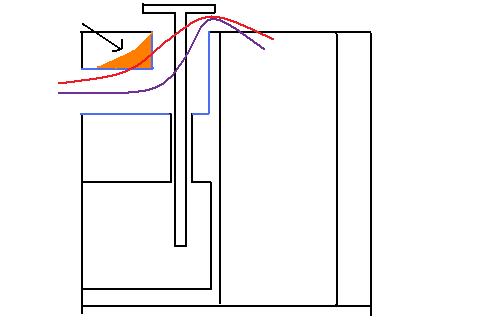A short radius side of the intake pathway- the pathway goes into the engine and turns up 90 degrees into the combustion chamber. The side of the pathway with the shortest distance on the 90 degree turn is the short radius side.
Drew a quick pic. Pic is of engine block and is the black lines. The pathway or intake runner is blue. The short radius side is orange which is where you want to grind off metal. The purple line represents the original path of fuel/air going into the engine before porting the short radius side. The red line represents the new path taken after you grind away on the short radius side.

How you need to think of it when you are porting is that the fuel/air charge is being sucked in and the suction starts at the piston when moving down. For the flat head engine, has a couple nasty sharp turns. These turns slow down the fuel/air charge moving into the engine. Your goal is to make these turns as less sharp as possible so the fuel/air charge keeps its speed moving through the pathway. When comparing the purple line to the red line, the red line has less of a bend in it compared to the purple line, so the red line will be faster moving going through the pathway. This can be done to the exhaust pathway also.
Flathead engines, OHV engines, OHC engines, have different pathway designs but the principle is the same, you just need to identify and evaluate the sections to do the porting. So the short radius side of the intake pathway will be in different spots on these 3 engines mentioned. My videos cover this and is done on a 5 hp
Briggs and Stratton flattie engine. With other mods too, I made a couple vids on different parts of this engine.
Hope it helps









